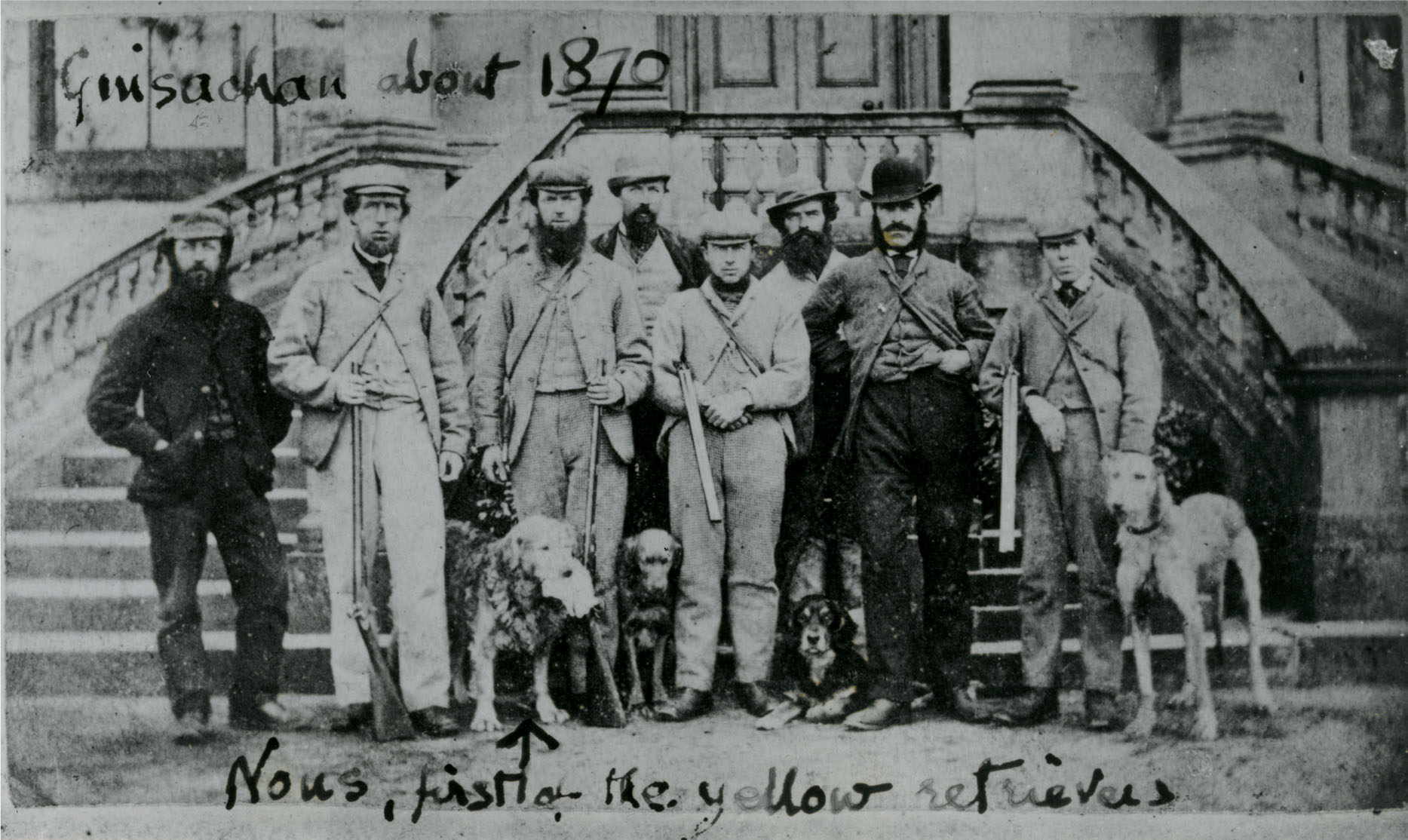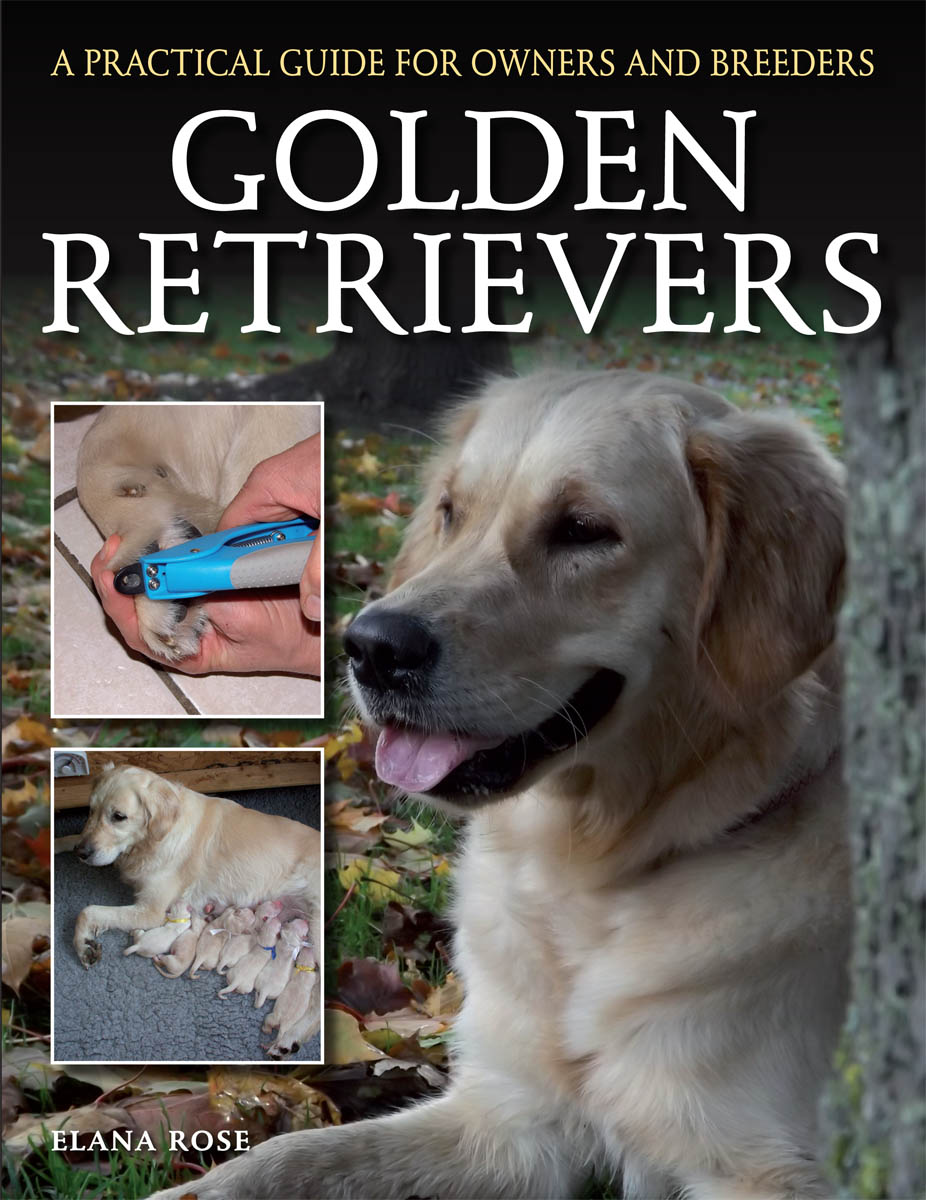
A PRACTICAL GUIDE FOR OWNERS AND BREEDERS
GOLDEN RETRIEVERS
ELANA ROSE

THE CROWOOD PRESS
First published in 2015 by
The Crowood Press Ltd
Ramsbury, Marlborough
Wiltshire SN8 2HR
www.crowood.com
This e-book first published in 2015
Elana Rose 2015
All rights reserved. No part of this publication may be reproduced or transmitted in any form or by any means, electronic or mechanical, including photocopy, recording, or any information storage and retrieval system, without permission in writing from the publishers.
British Library Cataloguing-in-Publication Data
A catalogue record for this book is available from the British Library.
ISBN 978 1 78500 038 6
CONTENTS
CHAPTER 1
WHATS IN A NAME?
A HISTORY
The Golden Retriever was originally bred, as the name implies, to retrieve, working mainly as a hunting companion to collect the game (originally waterfowl) that had been shot for sport. Being hardy, biddable in nature and soft in the mouth made the Golden Retriever an excellent choice for someone wanting a dog who would respond to commands, have a love for water and be gentle enough not to damage the game when retrieving it. Although the primary function of the Golden Retriever was as a hunting dog, over time, and as the breed gained popularity, it became a family companion and show dog.
The development of the Golden Retriever is attributed to Lord Tweedmouth from 1864 onwards, although the very starting point of the breed lies with a yellow, wavy-coated retriever bred by Lord Chichester. How the dog came into Lord Tweedmouths hands is a matter for speculation. Perhaps he purchased him directly from Lord Chichester, but the more romantic version tells that he first came across the dog in Brighton, where he had been sold by Lord Chichester to a craftsman; Lord Tweedmouth, impressed with the dog, offered to buy him. However this yellow retriever came into Lord Tweedmouths life, one thing is for certain: both Lord Tweedmouth and the yellow retriever would set the foundations for the breed. The dogs name was Nous.

Nous, the first Golden Retriever, photographed at Guisachan around 1870.
Nous was taken to Lord Tweedmouths estate in Guisachan in Scotland, where he was mated to a Tweed Water Spaniel bitch called Belle; this breed is now extinct. She produced four puppies, named Crocus, Cowslip, Primrose and Ada. The bitches of this litter were outcrossed to different breeds, including an Irish Setter, another Tweed Water Spaniel and a Flat Coat Retriever. The bloodline produced dogs that were excellent workers, very biddable and handsome. Puppies were given to close friends, family and most notably Lord Tweedmouths nephew, who would go on to breed Golden Retrievers himself. Nouss successors were bred true to type and became the forerunners of the breed we know today.
The breed did not, however, catch the public eye until Lewis (Loulou) Harcourt, who owned a number of Nouss descendants, decided to enter them into a Kennel Club show in 1908 in the Any Variety Retriever class, labelled as yellow Flat Coat Retrievers. They generated a great deal of interest, with many admirers wanting one of their own. Enthusiasts of the breed developed a breed club and breed standard, and campaigned to have the Golden Retriever recognized as a different breed from the Flat Coat Retriever. Only in 1913 was the breed accepted by the Kennel Club. Glory for the Golden Retriever came in 1937 when Mr J. Eccless dog FTCH Haulstone Larry won the Retriever Championship. From that moment onwards Golden Retrievers became an established breed, winning the hearts of many with their temperament, trainability and good looks. As the Golden Retrievers reputation spread, they became more appealing to people from all walks of life as a humble family pet, and thus they have become one of todays most popular dog breeds.

Lord Tweedmouth kept a record of matings, creating his own studbook.
BREED STANDARD
A Breed Standard comprises a set of guidelines describing the ideal characteristics, temperament and appearance of a breed, including the correct colour, and ensures that the breed is fit for function. Absolute soundness is essential. Breeders and judges should at all times be careful to avoid obvious conditions or exaggerations that would be detrimental in any way to the health, welfare or soundness of the breed. From time to time certain conditions or exaggerations may be considered to have the potential to affect dogs in some breeds adversely, and judges and breeders are requested to refer to the Breed Watch section of the Kennel Club website (http://www.the-kennel-club.org.uk/services/public/breeds/watch) for details of any current issues. If a feature or quality is desirable, it should only be present in the right measure. However, if a dog possesses a feature, characteristic or colour that is described as undesirable or highly undesirable, it is strongly recommended that it should not be rewarded in the show ring.
- General appearance: symmetrical, balanced, active, powerful, level mover; sound with kindly expression.
- Characteristics: biddable, intelligent and possessing natural working ability.
- Temperament: kindly, friendly and confident.
- Head and skull: balanced and well chiselled, skull broad without coarseness; well set on neck, muzzle powerful, wide and deep. Length of foreface approximately equals length from well defined stop to occiput. Nose preferably black.
- Eyes: dark brown, set well apart, dark rims.
- Ears: moderate size, set on approximate level with eyes.
- Mouth: jaws strong, with a perfect, regular and complete scissor bite, i.e. upper teeth closely overlapping lower teeth and set square to the jaws.
- Neck: good length, clean and muscular.
- Forequarters: forelegs straight with good bone, shoulders well laid back, long in blade with upper arm of equal length placing legs well under body. Elbows close fitting.
- Body: balanced, short-coupled, deep through heart. Ribs deep, well sprung. Level topline.
- Hindquarters: loin and legs strong and muscular, good second thighs, well bent stifles. Hocks well let down, straight when viewed from rear, turning neither in nor out. Cow-hocks highly undesirable.
- Feet: round and cat-like.
- Tail: set on and carried level with back, reaching to hocks, without curl at tip.
- Gait/movement: powerful with good drive. Straight and true in front and rear. Stride long and free with no sign of hackney action in front.
- Coat: flat or wavy with good feathering, dense water-resisting undercoat.
- Colour: any shade of gold or cream, neither red nor mahogany. A few white hairs permissible on chest only.
- Size: height at withers: dogs: 5661cm (2224in); bitches: 5156cm (2022in).
- Faults: any departure from the foregoing points should be considered a fault and the seriousness with which the fault should be regarded should be in exact proportion to its degree and its effect upon the health and welfare of the dog and on the dogs ability to perform its traditional work.















